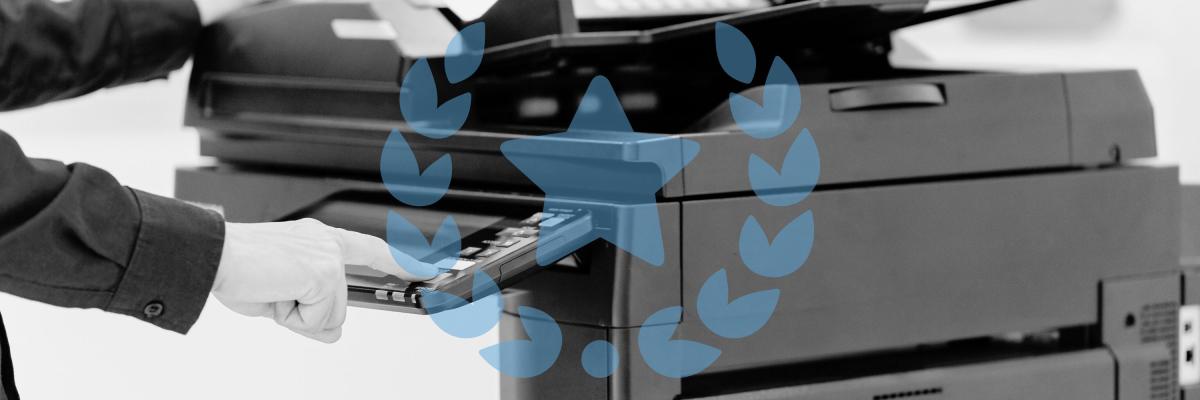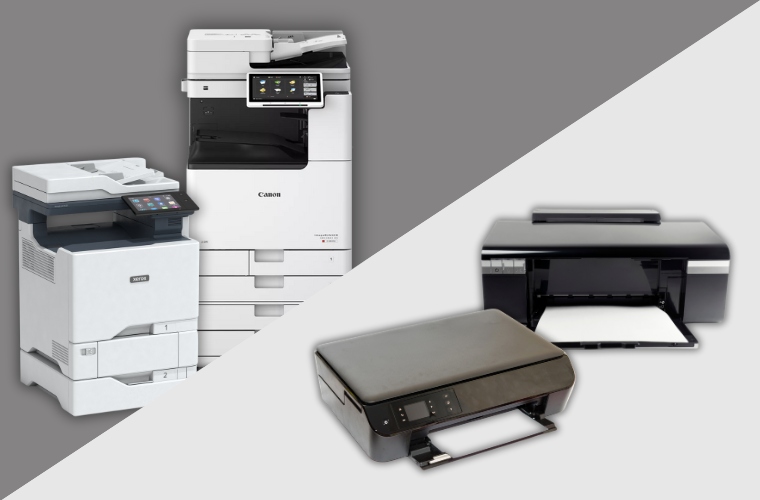
A few years ago, our Business Development Manager, Mary Shamburger, attended a convention that showcased copier units from several different brands.
This experience allowed her to see the differences, up close, in the features and designs of each machine, but to her surprise, one machine had a base made of particleboard, an artificial wood made from wood pulp and glue. Since copiers need steel bases to support hardware and protect users from fire, this was a shock.
The particleboard base was preventing the wheels from supporting the machine, and the wood was disintegrating.
The printer was falling apart because of its low-quality design, and it had also become a dangerous hazard for the people using it. They were using a machine fitted with incorrect materials that could lead to leaks, breakage, or even cause fires.
As a Xerox Diamond Authorized Solution Partner, STPT knows printers, and we want to use our knowledge to ensure this never happens to you.
In this article, we have created a list of features to look for in a quality machine, as well as some printer red flags to help you discern quality machines from dangerous or inefficient ones.
Does a lower price always mean lower quality?
This depends on the machine's technology.
However, if the price is dramatically lower than competing comparable models, you should be asking yourself what factors influenced the lower price.
As a rule of thumb with any machinery, you get what you pay for, so it’s important to understand the average cost of a quality copier/printer.
Now that we’ve addressed cost, let’s discuss printer red flags.
Red Flags: Printers That Are Dangerous or Inefficient
A printer red flag is an element or feature that indicates some level of danger or inefficiency. In order to maximize your office productivity, save money, and keep your team members safe, you want to avoid:
1. Lightweight Machines and Parts
A durable machine will have more weight to it. Avoid lightweight covers, trays, wheels, and attachment points.
2. Single Board Buttons
On the touchscreen, if you press a button and they all move, that is a sign of poor quality. Avoid these types of screens.
3. Poor Screen Visibility
Avoid touchscreen devices that are not in color or are hard to see. Business owners don’t want their employees struggling to see the screen when trying to print documents.
4. Wood or Plastic
Avoid copiers/printers that use wood, medium-density fiberboard, or plastic in any part of the machine. You’ll usually see these materials used at the base. Regardless, avoid these machines at all costs. They will break down on you.
5. Trays and Main Processor Not Connected
Another sign of a lesser quality machine is if the trays and main processor can come apart when moving. Durable machines will not come apart like this.
It’s important to understand the elements of a low-quality copier/printer so that you can identify machines that may be inefficient or dangerous for office use. But what are some features that make a copier printer high quality?
5 Features of a High Quality Printer
1. Steel Frames
As mentioned earlier, avoid wood or plastic. Look for a machine with a steel base and frame.
2. Heavy-Duty Wheels
Normal wheels can only hold up to a certain weight. You’ll likely need casters. Castors are heavy-duty made with metal connectors to the equipment to hold large units, whereas normal wheels could collapse under the weight of your machine.
3. Machine Lifespan
When researching a specific model, make sure to check reviews to see how long it lasted for the user. You’ll likely notice machines bought from retail giants like Wal-Mart or Amazon have a shorter lifespan.
4. High Visibility Interface
The touchscreen interface on quality machines will be in color and easy to view. Newer models are designed to look similar to an iPhone or tablet. Stylus pens work on these screens as well.
5. Sturdy Components
Look for machines with sturdy trays and doors. Lightweight parts usually end up breaking easily, requiring more maintenance over time. While researching, take into consideration the overall look of the machine.
Now that you know what to look for and what red flags to avoid when purchasing a printer, you should be able to identify a quality copier printer with ease. When you compare a high-quality made copier/printer with a poorly designed machine, you'll be able to spot the differences right away.
Office Printers vs. Home Printers: A Side by Side Comparison
Quality is the Top Priority
It is important to invest in a quality copier printer because it saves you money and time. Cheaper models from retail giants like Wal-Mart, Office Depot, or Amazon are built to be replaced, not fixed.
Desktop printers are not designed for business use. You’ll likely print more than your machine can handle if you try to use a home printer for an office. Overprinting on these types of printers is also very expensive. The cost per copy is much higher than machines built to print higher quantities.
To avoid getting stuck with a low-quality machine, we recommend purchasing or leasing from a local copier vendor.
As a print vendor, STPT can offer you products and services that make buying an office quality printer more affordable. We offer maintenance plans and repair services to ensure you always have a working machine.
Quality is our top priority, and it should be yours too. Contact us today to speak with a business consultant.
hbspt.forms.create({ portalId: "8300532", formId: "d437c1cf-4e05-44d9-bc28-d3e80ecc051a" });
